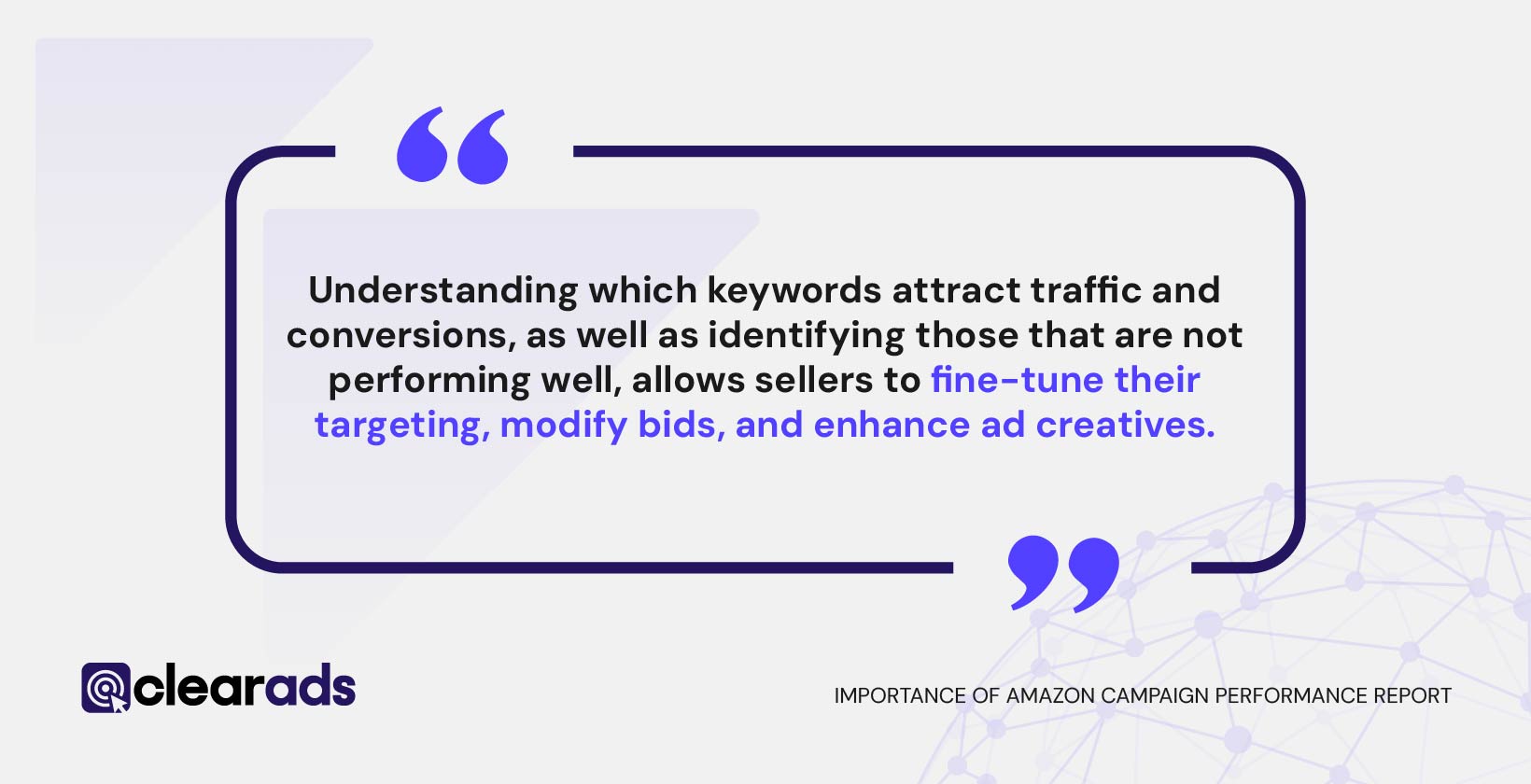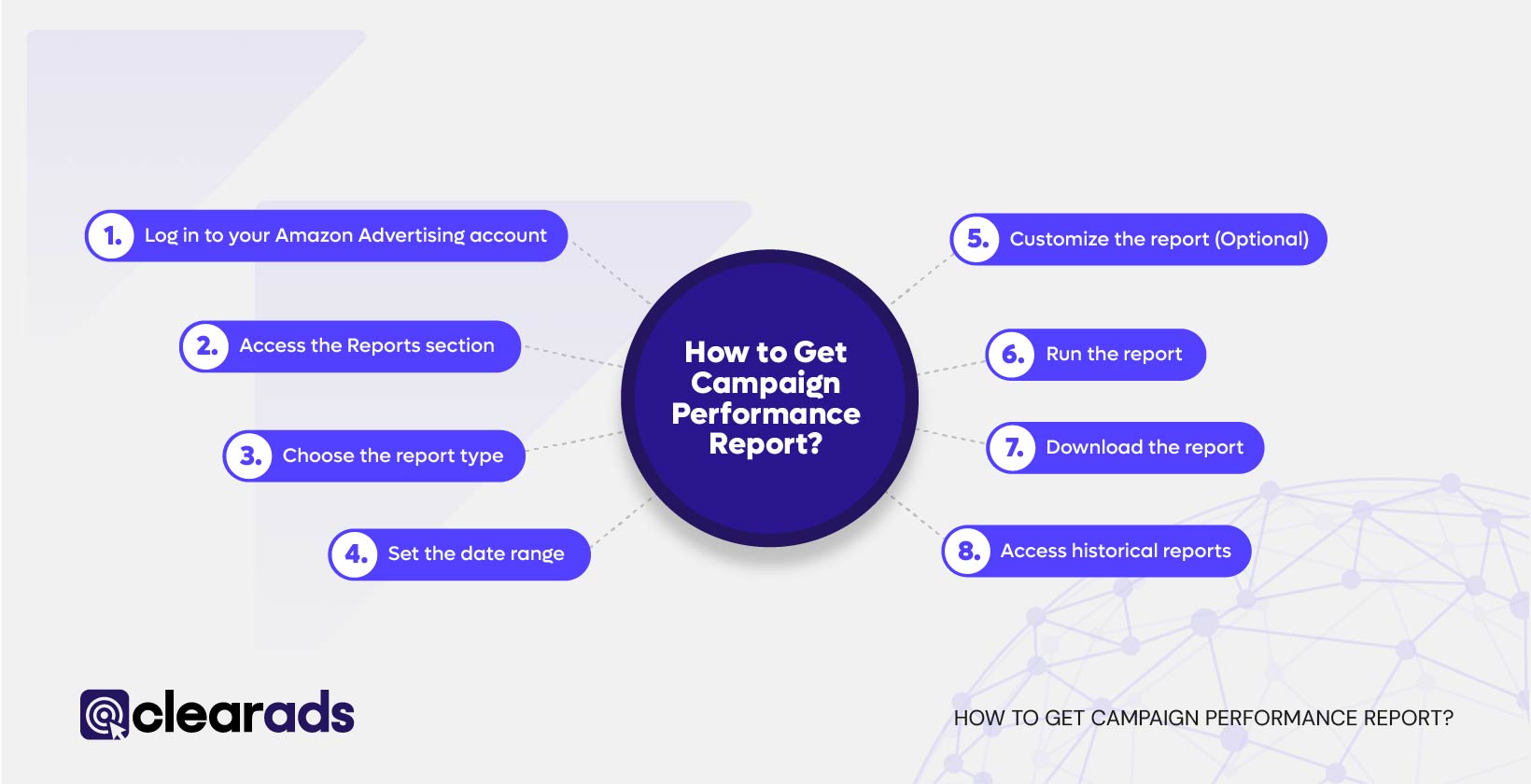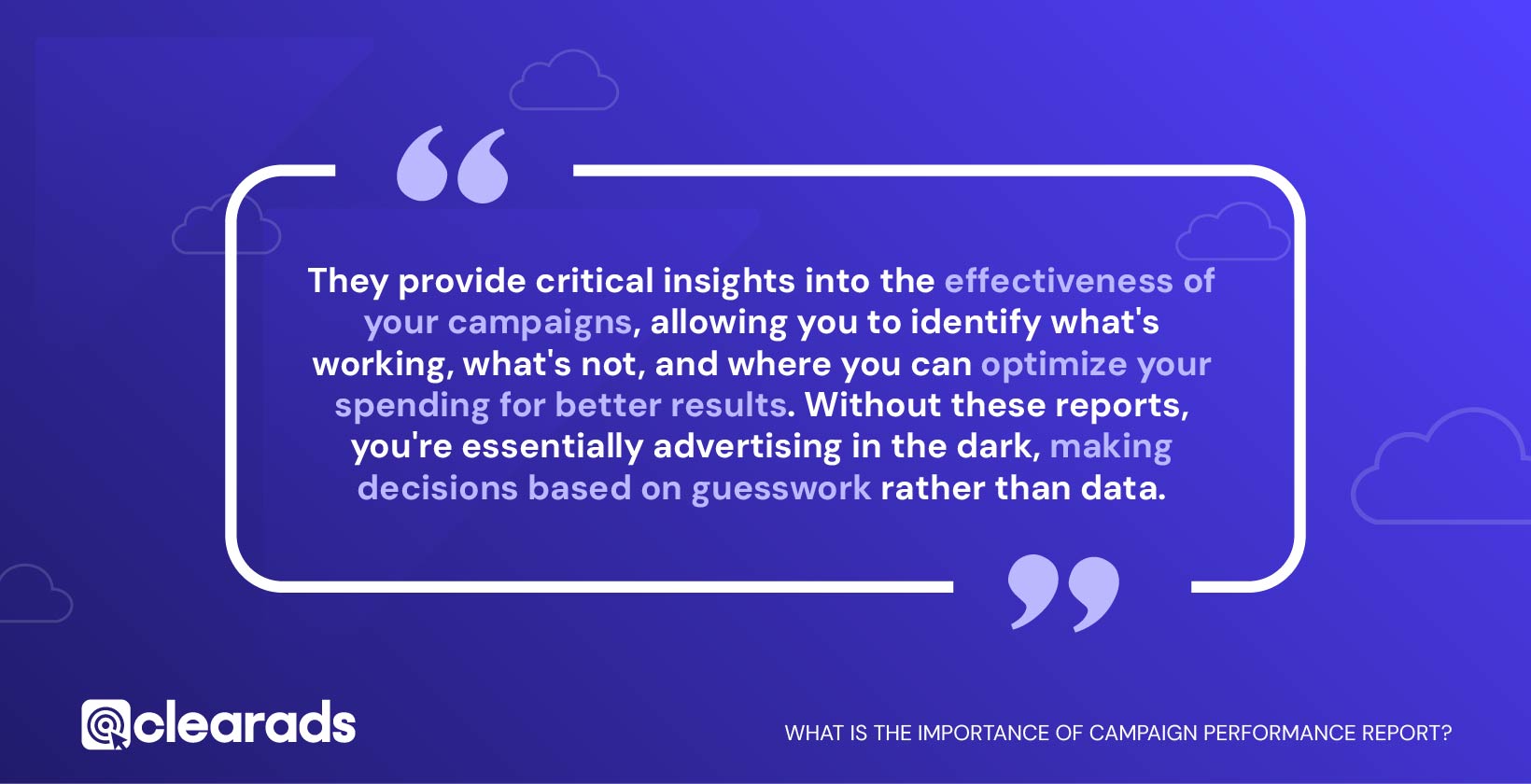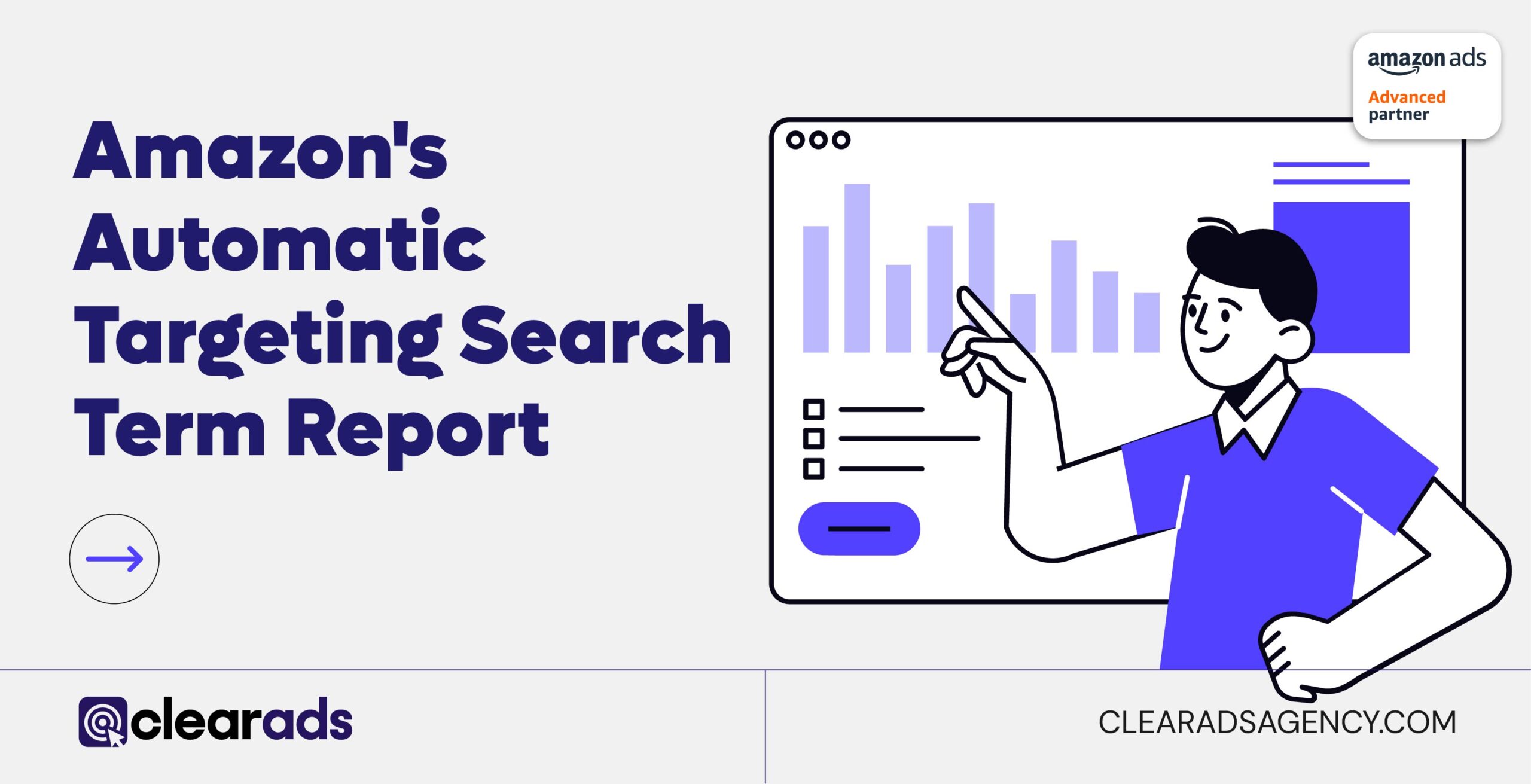Amazon Campaign Performance Reports are essential tools for Amazon sellers aiming to optimize their advertising ROI. These reports provide a detailed breakdown of campaign performance across keywords, ad groups, and targeting strategies. They highlight key metrics like impressions, clicks, ACoS, ROAS, and conversion rates, allowing sellers to assess what’s working and what’s not. Sellers can refine keyword targeting, adjust bids, improve ad creatives, and shift budgets based on this data. These reports also reveal customer search behavior and can uncover new keyword opportunities, making them invaluable for ongoing optimization.
Beyond insights, these reports influence ad visibility. Amazon’s algorithm uses campaign performance to determine ad placement, rewarding high-performing campaigns with better visibility. Without these reports, sellers are left guessing. By routinely analyzing and acting on them, businesses can reduce wasted spend, improve targeting, and boost conversions. While Amazon ads require time, strategy, and ongoing management, Campaign Performance Reports serve as a compass—guiding data-driven decisions that fuel sustainable growth.
Importance of Amazon Campaign Performance Report

Amazon Campaign Performance Reports, often referred to as Amazon Ads Reports, are essential for sellers aiming to enhance their return on investment in Amazon advertising. These reports offer a detailed look at how campaigns are performing, highlighting important metrics, keyword effectiveness, targeting information, and trends over time. By analyzing these reports, which can also be seen as a report on campaigns overview, sellers can make informed decisions regarding their advertising strategies. Understanding which keywords attract traffic and conversions, as well as identifying those that are not performing well, allows sellers to fine-tune their targeting, modify bids, and enhance ad creatives. This analysis helps pinpoint and eliminate unnecessary ad spending, reallocating resources to more lucrative opportunities. Additionally, Amazon Advertising Reports provide insights into customer search behavior, uncover new keyword possibilities, and monitor the effects of campaign adjustments over time. Regularly reviewing these reports is crucial for optimizing campaigns, boosting ROI, and ultimately achieving sustainable growth in the competitive Amazon marketplace. They deliver the vital data needed to move past guesswork and make strategic decisions about the best ways to allocate advertising funds.
What is Amazon Campaign Performance Report?

An Amazon Campaign Performance Report is a comprehensive and crucial document provided by Amazon that details the performance of your advertising campaigns within the Amazon marketplace. It’s a treasure trove of data, offering granular insights into how your ads are performing across various campaigns, ad groups, and keywords. Think of it as your personalized scorecard, revealing the effectiveness of your advertising strategies and highlighting areas for improvement. This report provides a detailed breakdown of key metrics, allowing you to understand which aspects of your campaigns are driving traffic and conversions, and which are underperforming or simply irrelevant to your target audience. In conjunction with other reports, such as the Amazon Search Term Report, it offers a complete picture of your advertising performance. The Amazon Search Term Report specifically shows you the actual search terms customers used when they clicked on your ad, which can be invaluable for keyword optimization. Amazon uses sophisticated algorithms to rank order the vendors, keeping Amazon’s goals in mind, such as maximizing revenue and providing a positive customer experience. Your campaign performance, as reflected in these reports, directly influences where your ads appear in search results and on product pages. Therefore, understanding and acting upon the information in these reports is essential for success. These reports are not just a collection of numbers; they tell a story about your advertising effectiveness, revealing which keywords resonate with customers, which products are driving the most sales, and how your ad spend is translating into tangible results. By diligently analyzing these reports, including the Amazon Search Term Report, you can gain a deep understanding of your customer’s search behavior, refine your targeting strategies, optimize your bids, and ultimately, maximize your return on ad spend. Essentially, the Campaign Performance Report, along with supporting reports like the Amazon Search Term Report, is your compass and map, guiding you toward more effective and profitable Amazon advertising.
What do Amazon Campaign Performance Reports reveal?
Amazon Campaign Performance Reports offer a detailed look at how well your advertising campaigns are performing. They include important metrics like keyword performance, targeting data, and trends over time, showing how your ad spend translates into impressions, clicks, conversions, and sales. This information reveals key insights about your advertising strategy and its effects on your business. For instance, it identifies which keywords are generating the most traffic and conversions, indicating a need to fine-tune your keyword targeting by adding, removing, or adjusting keywords and match types. It also provides insights into your Return on Ad Spend (ROAS) and Advertising Cost of Sale (ACoS), which reflect campaign profitability and highlight areas that could use optimization. The report outlines how well your targeting strategies are performing, whether through product targeting for Sponsored Products or audience insights for Sponsored Brands and Display, indicating how effectively you’re reaching your target audience. By examining search term reports alongside campaign performance reports, you can gain insights into customer search behavior, revealing the language they use and the terms that matter to them, which can help you optimize your product listings and marketing efforts. The report also points out areas that are underperforming, suggesting the need for adjustments to ad copy, bids, or targeting. Monitoring performance over time shows the effects of your changes, indicating whether your optimization efforts are successful. Lastly, while not explicitly stated, you can glean information about your competitors by analyzing keyword performance and search term reports, which can reveal their targeting strategies and product positioning. Overall, these reports provide the essential data needed to assess your advertising effectiveness, pinpoint areas for improvement, and make informed decisions to maximize ROI, establishing a clear connection between data analysis and campaign success.
How to Get Campaign Performance Report?

To get a Campaign Performance Report, follow these steps within the Amazon Campaign Manager.
- Log in to your Amazon Advertising account: Navigate to the Amazon Advertising website and sign in using your credentials.
- Access the Reports section: Once logged in, locate and click on the “Reports” tab, usually found in the main navigation menu of the Amazon Campaign Manager.
- Choose the report type: Select “Campaign Performance” from the list of available report types. This will ensure you generate the correct report for analyzing your campaign performance.
- Set the date range: Specify the period for which you want to analyze data. You can select from predefined options like “Today,” “Yesterday,” “Last 7 days,” “Last 30 days,” or select a custom date range to focus on a specific period.
- Customize the report (Optional): Some reporting interfaces allow you to customize the report by selecting specific metrics or dimensions you want to include. This can help you focus on the data that is most relevant to your analysis.
- Run the report: Click the “Run Report” or similar button to initiate the report generation process. Amazon’s system will then compile the data based on your selected criteria.
- Download the report: Once the report is generated, you’ll typically receive a notification, and the report will be available for download. Common download formats include CSV (comma-separated values) or Excel, allowing you to easily open and analyze the data in spreadsheet software.
- Access historical reports: The Amazon Campaign Manager usually stores previously generated reports, allowing you to access and re-download them as needed for historical analysis and trend tracking.
What can you see on the Campaign Performance Report?
Here’s what you can see in a Campaign Performance Report.
- Key Performance Metrics:
- Impressions: The number of times your ad was displayed.
- Clicks: The number of times your ad was clicked.
- Click-Through Rate (CTR): The percentage of impressions that resulted in clicks (Clicks / Impressions).
- Advertising Cost of Sale (ACoS): The percentage of ad spend attributed to sales (Ad Spend / Sales).
- Return on Ad Spend (ROAS): The revenue generated for every dollar spent on advertising.
- Conversion Rate: The percentage of clicks that resulted in a sale (Conversions / Clicks).
- Total Sales: The total sales attributed to your ads.
- Ad Spend: The total amount spent on advertising.
- Cost Per Click (CPC): The average cost you pay for each click on your ad.
- Campaign-Level Data: Metrics are often broken down by individual campaigns, allowing you to compare performance across different campaigns you’re running.
- Time-Based Data: The report allows you to view performance data over different periods (daily, weekly, monthly, or custom ranges), enabling you to track trends and identify seasonal patterns.
- Other Data Points (may vary depending on report type and campaign type):
- Search Terms (in Search Term Reports): These are the actual search terms customers used when they clicked on your ad. This is invaluable for keyword refinement.
- Targeting Data (for Sponsored Brands and Display): This may include information about audience demographics, interests, and behaviors.
It’s important to note that the specific metrics and dimensions available may vary slightly depending on the type of Amazon ad campaign you’re running (Sponsored Products, Sponsored Brands, Sponsored Display) and the type of report you’re generating.
What is the Importance of Campaign Performance Report?

Amazon Campaign Performance Reports, also known as Amazon PPC Reports, are essential tools for any seller serious about maximizing their advertising ROI. They provide critical insights into the effectiveness of your campaigns, allowing you to identify what’s working, what’s not, and where you can optimize your spending for better results. Without these reports, you’re essentially advertising in the dark, making decisions based on guesswork rather than data. By regularly analyzing these Amazon PPC Reports, you can gain a deep understanding of your customer’s search behavior, refine your targeting, improve your ad creatives, and ultimately drive more sales at a lower cost.
Furthermore, these Amazon PPC Reports empower data-driven decision-making, enabling you to move beyond gut feelings and base your advertising strategy on concrete evidence. They allow you to identify and eliminate wasted ad spend on underperforming keywords or targeting strategies, redirecting those resources to more profitable areas. By tracking performance over time, you can measure the impact of changes you make to your campaigns and continuously refine your approach for optimal results. These Amazon PPC Reports also help you discover new keyword opportunities, understand customer search patterns, and gain a competitive edge in the marketplace. Ultimately, Campaign Performance Reports, or Amazon PPC Reports, are the key to unlocking the full potential of your Amazon advertising and achieving sustainable growth.
What can you do After Analyzing the Campaign Performance Report?
Analyzing your Campaign Performance Report is only the first step. The real value comes from the actions you take based on the insights you’ve gained. After carefully reviewing the data, you can implement several key strategies to optimize your campaigns.
- Refine your keyword targeting. Identify high-performing keywords and consider increasing bids or expanding match types to capture more traffic. Conversely, pause or decrease bids for underperforming or irrelevant keywords to reduce wasted ad spend. The report may also reveal new keyword opportunities you hadn’t considered, which you can then add to your campaigns.
- Optimize your bidding strategy. Analyze your ACoS and ROAS to determine if your bids are aligned with your profitability goals. You might need to adjust bids based on keyword performance, time of day, or placement.
- Improve your ad creatives. If your CTR is low, it might indicate that your ad copy or images aren’t compelling enough. A/B test different ad variations to see what resonates best with your target audience.
- Refine your product targeting (for Sponsored Products campaigns). Identify which ASINs or product categories are driving the most conversions and focus your budget on those targets. You may also want to exclude underperforming ASINs to improve your overall campaign efficiency.
- Adjust your campaign budget. If certain campaigns significantly outperform others, you might consider shifting budget from less effective campaigns to those generating the highest returns.
- Analyze search term reports (if available) to discover the actual search terms customers used when clicking on your ads. This information can be invaluable for identifying new keywords, refining existing keyword lists, and even optimizing your product listings.
- Monitor performance over time. Regularly review your reports to track the impact of the changes you’ve made and identify any emerging trends. This ongoing optimization process is crucial for maximizing the effectiveness of your Amazon advertising campaigns.
- Experiment and test new strategies. The data from your reports will help you understand what works best for your products and target audience, allowing you to continually improve your campaigns over time.
How does the Amazon Campaign Performance Report Contribute to Amazon Ad Placement?
The Amazon Campaign Performance Report plays a crucial role in determining where your ads appear on Amazon’s search results pages and product detail pages. Amazon’s advertising algorithm considers a variety of factors when deciding which ads to show and where, and your campaign’s performance, as detailed in the Amazon Placement Report, is a significant one. A well-performing campaign, as evidenced by metrics like high click-through rates (CTR), conversion rates, and low ACoS, signals to Amazon that your ads are relevant and valuable to shoppers. This positive feedback loop encourages the algorithm to give your ads more visibility, placing them higher in search results or more prominent positions on product pages. Essentially, the report provides the data you need to optimize your campaigns, and that optimization, in turn, directly influences your ad placement. Conversely, a poorly performing campaign with low CTR and high ACoS may result in your ads being shown less frequently or in less desirable locations, impacting your reach and potentially wasting your ad budget. Therefore, consistently analyzing your Campaign Performance Report and taking action to improve your metrics is essential for improving your campaign performance but also for securing better ad placement. This ultimately contributes to how Amazon placement improves campaign performance.
How long do Amazon ads take to deliver?
The common misconception that Amazon ads are “delivered” in the same way a package is. Instead, Amazon ads are eligible to appear, but they may not show for a variety of reasons. While there’s no set timeframe for an ad to start appearing after you create it, several factors can prevent your ads from being shown at all. These include budget limitations: if your daily budget is too low or has been exhausted, your ads will stop running. Policy compliance is another critical factor; your ads must adhere to Amazon’s advertising policies regarding content, imagery, and product claims. Keyword relevance plays a significant role; if your chosen keywords don’t match what customers are searching for, your ads are unlikely to be displayed. Optimization of ad spend, including bids and targeting, is also crucial. If your bids are too low, you may not be competitive enough to win ad placements. Similarly, ineffective targeting can lead to your ads being shown to the wrong audience, resulting in low click-through rates and impacting your overall performance.
Beyond these core issues, other factors can influence ad visibility. For instance, if you’ve just launched a new campaign, it can take some time for Amazon’s algorithm to learn and optimize your ad delivery. The algorithm needs data to understand which keywords and targeting strategies are most effective for your products. Also, competition plays a role. In highly competitive categories, your ads might be competing against numerous other advertisers, making it more challenging to secure prominent placements. Even if your campaign is well-optimized, external factors like seasonality or changes in customer demand can affect ad performance. Essentially, if your ad isn’t showing, it’s less about “delivery time” and more about troubleshooting these potential roadblocks. You should meticulously check your daily budget, ensure your ad complies with Amazon’s policies, review your keyword selection, and evaluate your ad spend strategy, including bids and targeting. These are the key areas to investigate if your Amazon ads aren’t appearing as expected, and often require ongoing monitoring and adjustments. It’s also important to be patient, especially with new campaigns, and allow the algorithm time to learn and optimize.
Are Amazon ad campaigns worth it?
Yes, but with significant caveats. Amazon ad campaigns can be incredibly valuable for driving traffic, increasing sales, and boosting product visibility, but they’re not a guaranteed magic bullet. Whether they’re “worth it” for your business depends heavily on several interconnected factors. Your product and niche play a crucial role; highly competitive markets require larger budgets and sophisticated strategies, while less saturated niches might see success with smaller investments. Simply launching a campaign without ongoing optimization is unlikely to yield results. You must regularly monitor performance, adjust bids, refine targeting, and improve ad creatives, demanding time, effort, and Amazon advertising knowledge. Furthermore, your product listing quality directly impacts campaign success. A compelling ad can drive traffic, but a poor listing with bad images, a weak description, or few reviews will likely fail to convert clicks into sales. Budget is another key consideration. While you can start small, be prepared to invest enough to gather data and allow for campaign optimization. Trying to succeed on a minimal budget can be challenging. Clearly defined goals are also crucial. Whether you aim to increase brand awareness, drive sales, or launch a product, your goals will shape your strategy and how you measure success. Finally, effective tracking and analysis are vital. Monitoring metrics like ACoS, CTR, and conversion rate allows you to identify what works and what doesn’t. Without this data, you’re essentially guessing. In short, Amazon ads can be powerful, but they demand careful planning, ongoing management, platform knowledge, and a commitment to optimization. They are not a “set it and forget it” solution. If you’re willing to invest the time, effort, and potentially resources to learn and optimize, then Amazon advertising can be a powerful engine for business growth.

